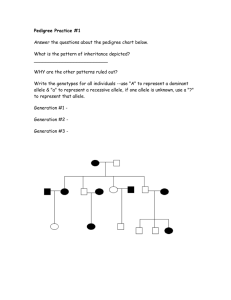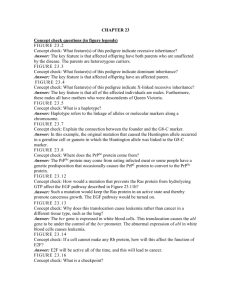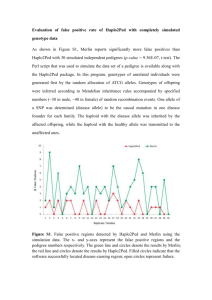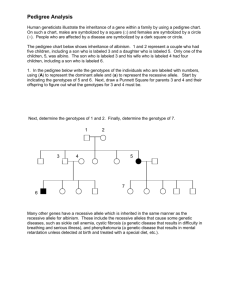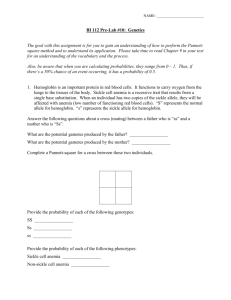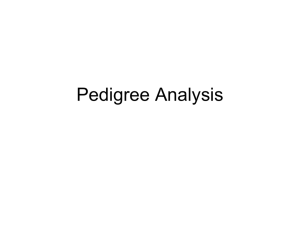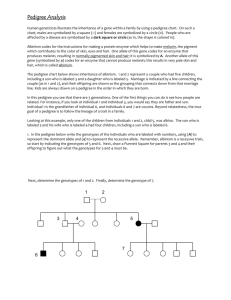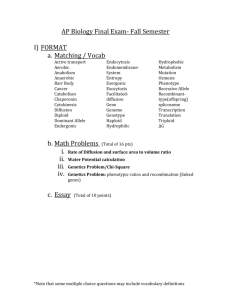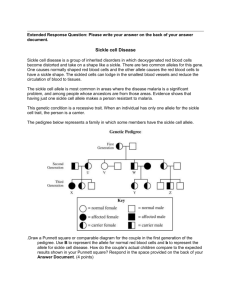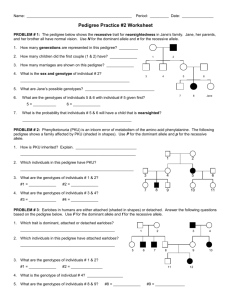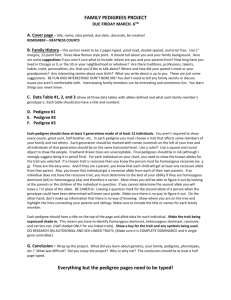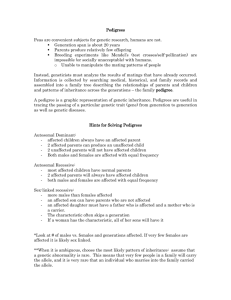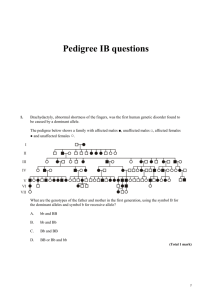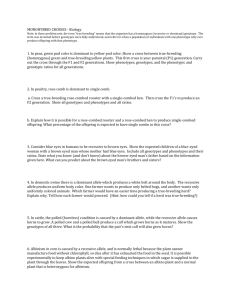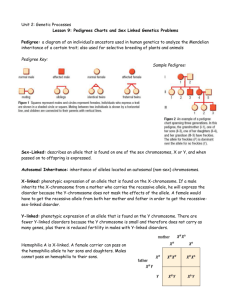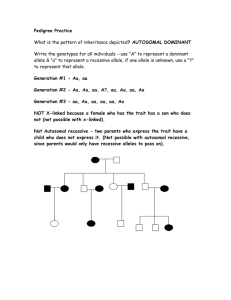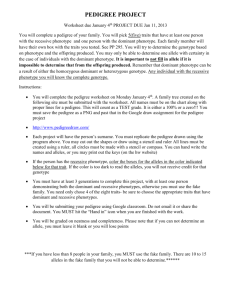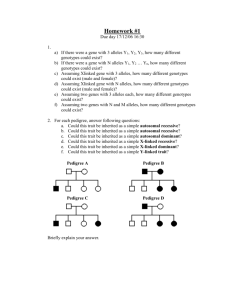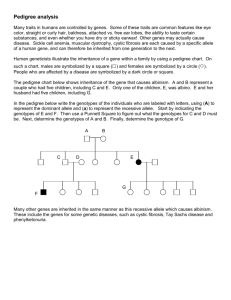Using Pedigrees to Trace Inheritance Patterns
advertisement
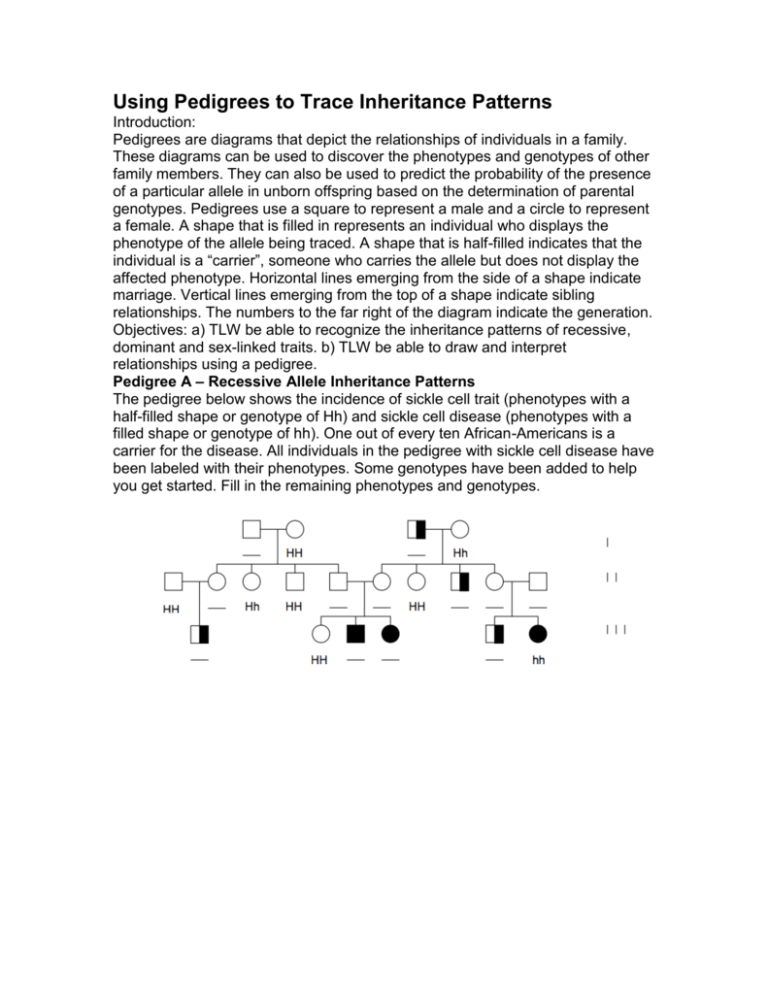
Using Pedigrees to Trace Inheritance Patterns Introduction: Pedigrees are diagrams that depict the relationships of individuals in a family. These diagrams can be used to discover the phenotypes and genotypes of other family members. They can also be used to predict the probability of the presence of a particular allele in unborn offspring based on the determination of parental genotypes. Pedigrees use a square to represent a male and a circle to represent a female. A shape that is filled in represents an individual who displays the phenotype of the allele being traced. A shape that is half-filled indicates that the individual is a “carrier”, someone who carries the allele but does not display the affected phenotype. Horizontal lines emerging from the side of a shape indicate marriage. Vertical lines emerging from the top of a shape indicate sibling relationships. The numbers to the far right of the diagram indicate the generation. Objectives: a) TLW be able to recognize the inheritance patterns of recessive, dominant and sex-linked traits. b) TLW be able to draw and interpret relationships using a pedigree. Pedigree A – Recessive Allele Inheritance Patterns The pedigree below shows the incidence of sickle cell trait (phenotypes with a half-filled shape or genotype of Hh) and sickle cell disease (phenotypes with a filled shape or genotype of hh). One out of every ten African-Americans is a carrier for the disease. All individuals in the pedigree with sickle cell disease have been labeled with their phenotypes. Some genotypes have been added to help you get started. Fill in the remaining phenotypes and genotypes. Conclusions: 1. Which pedigree is easier to label, A or B? Explain why. 2. What do you notice about the presence of carriers in the recessive allele pedigree compared to the dominant allele pedigree? 3. How many affected individuals are in each generation? I II III a. For the recessive allele: b. For the dominant allele: 4. Which type of allele can be passed down from phenotypically normal parents? 5. What is the probability of a person having sickle cell disease if one parent has the disease and the other is homozygous normal? 6. What is the probability of a person having Huntington’s disease if one parent is affected and the other is homozygous normal?

